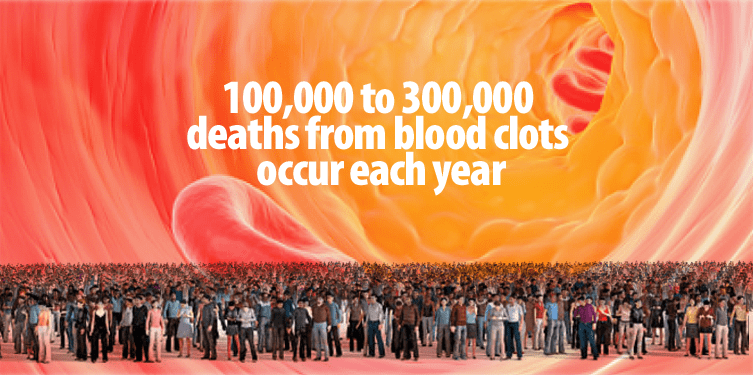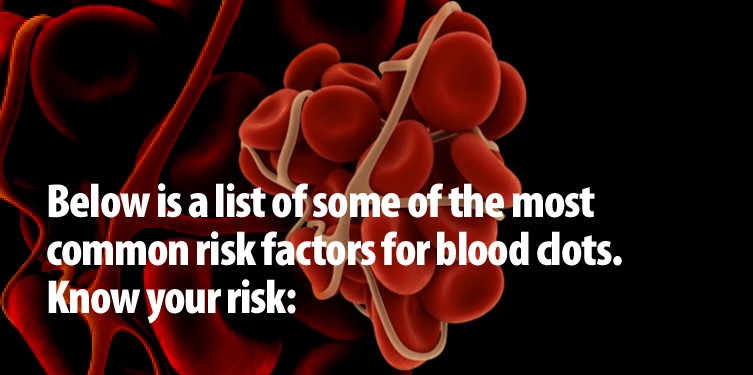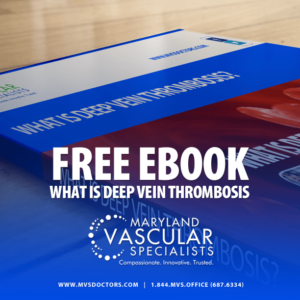What Every Professional Driver Needs to Know About Deep Vein Thrombosis (DVT)
Did you know professional truck drivers are at higher risk for blood clots because they are seated for long periods of time? If you (or a loved one) work in one of the following occupations, you have a higher risk of developing the life-threatening, blood clot condition called deep vein thrombosis (DVT):
- Truck drivers
- Cab drivers
- Bus drivers
- Uber & Lfyt Drivers
- Airline pilots
- Police Officers
- EMT Drivers
Deep Vein Thrombosis (DVT) occurs when a blood clot forms in a vein in your body – most commonly, your legs. If the formed blood clot breaks loose, it travels through your bloodstream and may get stuck in your lungs, heart or brain, leading to dangerous blockages.
Why are professional drivers more likely to be at risk for blood clots?

Immobility and keeping sitting still for more than two hours at a time increase your risk for blood clots. These risk factors are common for the majority of professional drivers, and the risk is even high for long-distance drivers. In the United States, there are an estimated one million blood clots diagnosed every year, according to the National Blood Clot Alliance.
According to the Stop the Clot organization:

There are 100,000 to 300,000 deaths from blood clots occur each year, which is greater than the total number of people who lose their lives each year to AIDS, breast cancer, and motor vehicle crashes combined!
Know Your Risk – Below is a list of some of the most common risk factors for blood clots:

- Sitting too long
- Hospitalization for illness or surgery
- Major surgery, particularly of the pelvis, abdomen, hip, knee
- Obesity
- Severe trauma to your body – particularly if it results in a bruise and swelling
- Injury to a vein that may have been caused by a broken bone or severe muscle injury
- Hip or knee replacement surgery
- Cancer and cancer treatments
- Use of birth control methods that contain estrogen such as the pill, patch or ring
- Pregnancy, which includes the six weeks after the baby is born
- The use of hormone therapy, which contains estrogen
- A family history of blood clots
- Confinement to bed
How do you know if you have a blood clot?
Know & Recognize The Symptoms of Deep Vein Thrombosis:
If you have any of these signs or symptoms, please call a healthcare professional immediately:
-
- Swelling, usually in one leg (or arm)
- Leg pain or tenderness often described as a cramp or Charley horse
- Reddish or bluish skin discoloration
- Leg (or arm) warm to touch
DVT usually occurs in your legs, but sometimes in your arms. These blood clot symptoms may feel similar to a pulled muscle or a “Charlie horse,” but differ in that the leg (or arm) may be swollen, slightly discolored, and warm. It is also possible for someone with DVT blood clots to have no symptoms or signs at all.
One very important thing to know is that blood clots can happen to you or your loved one at any age and at any level of physical fitness. Blood clots do not discriminate! – They can develop in anyone, and people, like professional drivers, who have known risk factors need to do their best to prevent blood clots and to be aware of the symptoms.
Don’t Ignore The Symptoms of Blood Clots – Schedule An Expert Consultation
If you have any of the risks and symptoms outlined above for DVT blood clots, do not ignore them as a blood clot may require immediate medical attention to save your life. Be sure to contact a vascular specialist (or your primary care physician for a referral) as soon as possible. Click here to schedule an expert consultation at Maryland Vascular Specialists– we have 11 convenient locations to serve you in Maryland and Pennsylvania.

4 Tips for Professional Drivers to Prevent Leg Pain, Blood Clots & DVT
The good news is blood clots can be prevented and treated. Here are a 4 tips for professional drivers to practice that will help prevent leg pain that leads and reduce your risk for blood clots:
- 1. Stay Hydrated: Staying well-hydrated keeps blood appropriately thinned and moving more smoothly through the veins. On the other hand, dehydration can make the blood of even a healthy person move sluggishly.
- 2. Get Out & Walk Every 2 – 3 Hours: As much as possible, get our of your vehicle every 2 to 3 hours to take a quick walk. You’ll also want to to stretch your calves and move your ankles when you take a break while driving. Every time you stop for any reason, bend your legs up and down, preferably doing mini-squats if you can.
- 3. Flex Your Feet: There definitely will be times when you just can’t stop or get out of the truck or car you are driving as often as you would like or should. When this happens, one of the most common suggested tactics to prevent DVT blood clots is to flex your feet. You can do this by flexing your toes back toward you and holding it for 5 seconds. Then, release it and point the toes away from you as much as you can for five seconds. Next, roll each ankle around in a circle a few times. Do this as often as you can – whenever your feet don’t need to be on the pedals.
- 4. Wear compression socks (at least 20 mmg) : While these types of socks are not the most attractive looking, there are comfortable and they are great at helping professional drivers prevent DVT. Compression socks are specifically designed to keep the blood flowing around in the legs by compressing the muscles slightly.
Download FREE Ebook – What is Deep Vein Thrombosis?
No one ever thinks they will develop a Deep Vein Thrombosis (DVT) blood clot, but it can happen to anyone at any age. The good news is that DVT is preventable and treatable if discovered early and treated. Learning more about DVT (symptoms and how to prevent it) could save your life! Click below to download your FREE ebook today.


